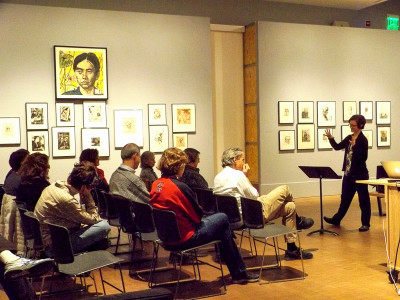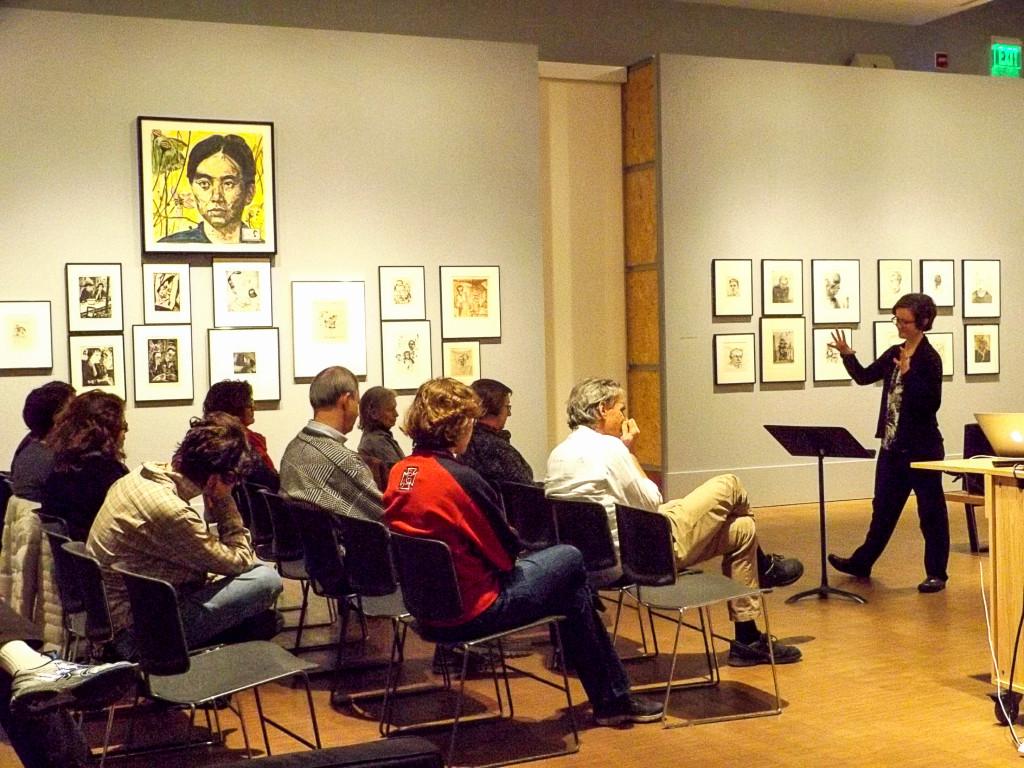
For sound artist and Professor Abby Aresty, Music, a recent move to Iowa meant more than a simple change in location. While hiking at Conard Environmental Research Area last year, Aresty felt inspired by the prairie environment around her, and decided to use the area’s soundscape in her art. Part of her work was shown last Wednesday, Feb. 11, when Aresty gave a lecture entitled “Prairie Listening,” which included several sound art pieces recorded at the Conard Environmental Research Area.
Aresty’s background lies in music composition, and she’s harbored a long-held interest in recording and experimenting with “real” sounds, or sounds which originate outside the music studio. It wasn’t until recently, however, that Aresty turned her sights towards nature as a source of inspiration for her compositions.
“I would say in some ways it is an emphasis on nature, but in another, it is an emphasis on the relationship between the natural world and the built world,” Aresty said.
Aresty first discovered the potential for beauty in this juxtaposition during her time recording for an installment she was creating for a Seattle arboretum. One day, when she was attempting to capture the sound of falling rain, she kept being interrupted by the sound of a nearby lawn mower. While annoyed at first, she soon discovered that the sound of gears changing on the machine produced an unusual and eerie sound, which complemented the natural sounds of the arboretum.
She incorporated this theme of nature and machines into her other projects as well, and the idea soon led her to focus on how humans can shape the soundscapes around them. With her latest “Prairie Listening” project, Aresty became interested in how meditation can be used as a tool to explore this goal.
“I became really interested in our own ability to shape our experience of our soundscape through purposeful listening, and in a lot of ways, the work I’m doing now is an extension of that … thinking about listening modes and meditations and how that can affect our experience,” Aresty explained.
Throughout the course of the lecture, Aresty included five different mediation sessions. Before each session, Aresty prompted the audience with a quote, often from a famous naturalist, and asked members to focus on an aspect of their listening or on a part of the sound itself.
“I might ask people to imagine extending their listening beyond the boundaries of our perception, our auditory thresholds,” Aresty said. “For instance, with the prairie insects, there are all sorts of ultrasonic sounds, or infrasonic sounds, so in that sense we can extend our listening.”
Aresty believes that it is very important for humans to be connected to their environment and soundscape. In her lecture, she cited studies that found that when people feel like they can’t control the noises around them, they experience negative physiological symptoms, including stress. Recognizing that many sounds are uncontrollable, Aresty believes the solution could lie in purposeful listening.
“Maybe we have no control over turning it on or off, but we instead have control over how we listen to it, on how we focus our attention. There is a great quote by John Cage, that says something to the effect that wherever we are, most of what we hear is noise, and it bothers us, but when we listen to it, we find it fascinating,” Aresty explained.
While Aresty said she hopes that in the future people will be more conscious of the soundscapes they physically create, for now she just wants people to become more connected to the existing soundscapes around them. In an effort to extend her current “Prairie Listening” project, Aresty plans on possibly building a sound art installation on campus that we will feature sounds from natural prairie sites nearby.
“I think it would be amazing to have some place, a location, where people could have a remote connection to CERA without necessarily having to be there physically,” Aresty said. “My hope is that through thinking about it, through experiencing, through purposeful listening and thinking about creative ways to engage with our soundscapes, that we can all take a step in creating soundscapes for our community that are more intentional.”





























































